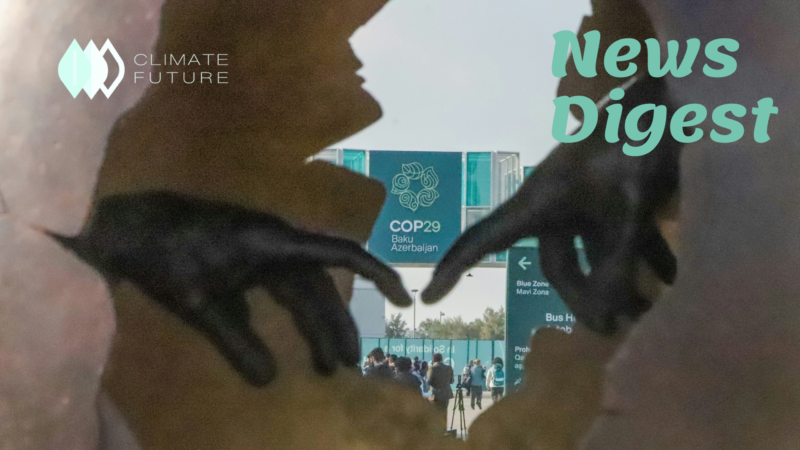Japan: IAEA monitoring treated water release from Fukushima nuclear plant
Real-time data on water flow rates and radiation monitoring has been made available by the IAEA in relation to the controlled discharge of the treated water. The water was contaminated as a result of coming into contact with melted fuel, fuel remnants, and other radioactive materials. Advanced Liquid Processing System (ALPS) filtration was used to treat and dilute it, and it was then kept in specially constructed tanks. More than a million cubic meters of treated water were stored in more than 1,000 of these tanks as of June. According to a report from the IAEA published this month, Japan’s strategy and actions to release the treated water were “consistent with relevant international safety standards.” A “negligible radiological impact” on humans and the environment would also result from the “controlled, gradual discharges” of the treated water. An IAEA Task Force composed of senior agency officials and internationally renowned nuclear safety experts from 11 nations produced the report after nearly two years of work. The Task Force met with representatives from the government and the nuclear plant’s operator, Tokyo Electric Power Company (TEPCO), numerous times while on five review missions to Japan. The Task Force also issued six technical papers during this time. According to media accounts, Japan’s choice to discharge the treated water into the sea was criticized both at home and in some of its neighbors.
Don’t let wastewater opportunities flow down the drain
In the new report Wastewater: Turning Problem to Solution, UNEP notified that just 11% of treated wastewater is recycled while almost half of the world’s untreated wastewater flows into lakes, rivers, and seas. Wastewater has the potential to replace synthetic fertilizers, supply more than 10 times as much water as can be produced through desalination techniques, and give alternative energy to half a billion people. A major event during this year’s World Water Week is the release of the study, which was co-published by UNEP, the Global Wastewater Initiative (GWWI) platform, and GRID-Arendal, a nonprofit organization in Norway. It emphasizes wastewater’s capability to change from a climate issue to a remedy. Wastewater has the potential to produce five times as much energy as is required for its treatment in the form of biogas, heat, and electricity. Furthermore, effective wastewater management could aid nations in reducing water insecurity and adjusting to climate change. 13.4% of the world’s agricultural nutrient needs may be satisfied by recycling nitrogen, phosphorous, and potassium from wastewater. Additionally, an area greater than Germany—about 40 million hectares—could be irrigated with proper wastewater management. The initiatives show the potential for scalable solutions across many climate zones and economies. It also exhorts businesses and governments to consider wastewater as a “circular economy” opportunity, describing the potential jobs and earnings the priceless resource can produce.
UNESCO World Heritage Sites often ‘last line of defense against extinction’
According to new research by UNESCO and the International Union for Conservation of Nature (IUCN), although areas covered by the World Heritage Convention account for less than 1% of the planet’s surface, they are home to more than 20% of the planet’s biodiversity. The 195 States that are parties to the treaty have been urged by the UN agency to strengthen conservation efforts in light of climate change and the possibility of further extinction of species. These locations, which are spread out across 167 nations, are given the strictest level of international protection by the World Heritage Convention. The 1972 pact has made it possible to carry out effective conservation projects, such as those in the Chitwan National Park in Nepal and Kaziranga National Park in India, where the population of Greater One-Horned Rhinos has increased by around 4,000 percent since the mid-1980s. According to a worldwide agreement reached last year, UNESCO urged nations to give World Heritage sites top priority in their national biodiversity goals and action plans. By the end of the decade, the targets set forth in the Kunming-Montreal Global Biodiversity Framework should have protected 30% of the world’s lands, coastal regions, and inland waters. According to UNESCO, by the year 2025, all managers of World Heritage sites will have received training in climate change adaptation techniques, and by the year 2029, all sites will have implemented climate change adaptation methods.
New UN guidance affirms children’s right to a clean, healthy environment
The Committee finally recognized children’s right to a safe, wholesome, and sustainable environment in the so-called General Comment No. 26. It thoroughly explains what States must do per the 196-nation UN Convention on the Rights of the Child. The 1989 convention specifies the rights of children, including their right to life, health, clean water, and survival and development. The most recent General Comment addressed environmental rights with a particular focus on climate change. It offers legal guidance on how children’s rights are affected by a particular issue or area of legislation.Countries that have ratified the UN Convention on Children’s Rights are urged to move swiftly in a number of directions, such as phasing out fossil fuels in favor of renewable energy sources, enhancing air quality, assuring access to clean water, and preserving biodiversity. The recommendations emphasize the importance of environmental education and suggest that when making environmental decisions, children’s opinions must be taken into account. Additionally, as part of the consultation process, the UN Children’s Fund (UNICEF) contributed additional technical know-how and assisted in gathering viewpoints from kids. General Comment No. 26 provides guidance in interpreting States’ commitments under the Paris Agreement to respect, advance, and take into account their responsibilities with respect to children’s rights while implementing climate action.
References
https://news.un.org/en/story/2023/08/1140037
https://news.un.org/en/story/2023/08/1140002



